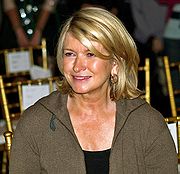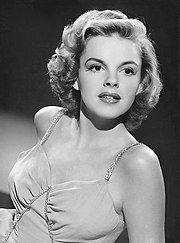Judy Garland's Human Design Chart
2/5 Sacral GeneratorBiography of Judy Garland: An Iconic Star with a Unique Human Design
Judy Garland, born Frances Ethel Gumm on June 10, 1922, in Grand Rapids, Minnesota, was an American singer, actress, television host, dancer, and vaudevillian. Her career spanned 45 of her 47 years, during which she attained international stardom in musical and dramatic roles, as a recording artist, and on the concert stage. Renowned for her versatility, Garland received numerous accolades including a juvenile Academy Award, a Golden Globe Award, a Special Tony Award, and became the first woman to win the Grammy Award for Album of the Year with her live recording “Judy at Carnegie Hall” in 1961.
Early Life and Family Background
Garland was the youngest of three daughters born to Frank and Ethel Gumm. Her father was a singer and managed a movie theater, while her mother was instrumental in promoting Judy’s early career in entertainment. However, her family life was fraught with challenges; her father was bisexual, and her mother openly resented his affairs. Despite these difficulties, Judy’s talent shone through from a young age.
Judy made her debut as “Baby Gumm” at just two-and-a-half years old. By 1926, the Gumm family relocated to Southern California to foster the burgeoning career of their song-and-dance trio. It was George Jessel who suggested the trio change their name to the Garland Sisters, and Frances adopted the stage name “Judy” inspired by a Hoagy Carmichael song.
Career Breakthrough and MGM Era
At the age of 12, Judy Garland was billed as “the little girl with the leather lungs,” capturing the attention of MGM Studios. Under contract at 13, she embarked on a 16-year journey with the studio, producing 28 pictures while battling exhaustion, breakdowns, and the pressures of Hollywood. Despite the personal challenges she faced, Judy Garland’s performances left an indelible mark on the entertainment industry.
Her films during this era included classics such as “Broadway Melody” (1937), “Meet Me in St. Louis” (1944), “Easter Parade” (1948), and “A Star is Born” (1954). Her career was defined by both her on-screen magic and off-screen struggles, including her reliance on amphetamines and barbiturates to manage her weight and sleep, a practice encouraged by the studio.
Human Design: The Generator and Sacral Authority
Incorporating Judy Garland’s Human Design offers a unique perspective on her life and career. As a Generator with a Sacral Authority, Garland was naturally energetic and driven, qualities that fueled her legendary performances. Her Strategy, “To Respond,” suggests that she thrived when opportunities came her way, allowing her natural talents to shine.
Her 2/5 Profile, known as the “Hermit/Heretic,” indicates a natural desire for alone time balanced with an inherent need to make a significant impact in the world. This duality is evident in Garland’s life; she was both a private individual and a public figure whose performances have left a lasting legacy.
Garland’s Incarnation Cross, the Right Angle Cross of Rulership (45/26 | 22/47), highlights her ability to take the lead and influence others. Her channels, “57-10” and “9-52,” further emphasize her intuition and focus, inspiring generations of performers with her ability to command the stage.
Personal Life and Challenges
Judy Garland’s personal life was as tumultuous as it was public. She married five times, with her most notable unions being to Vincente Minnelli, with whom she had her daughter Liza Minnelli, and Sid Luft, the father of her other children, Lorna and Joey Luft. Sid Luft also played a significant role in managing her successful live performances.
Despite her professional success, Garland faced lifelong challenges with substance abuse and financial instability. Her addiction to drugs and alcohol was well-documented, and her financial woes often left her in debt, owing hundreds of thousands of dollars in back taxes.
Legacy and Final Years
Judy Garland’s career was prolific. She made 32 feature films, participated in numerous radio broadcasts, and performed over 1,100 theater, nightclub, and concert engagements. Her recording of “Judy at Carnegie Hall” not only won five Grammy Awards but remains a timeless testament to her talent.
Sadly, her struggles with addiction ultimately led to her untimely death in London on June 22, 1969, from a barbiturate overdose at the age of 47. Despite her tragic end, Garland’s impact on the entertainment industry endures, influencing countless artists and capturing the hearts of audiences worldwide.
Frequently Asked Questions
What is Judy Garland’s Human Design Type?
Judy Garland’s Human Design Type is a Generator, which means she was naturally energetic and thrived on responding to opportunities presented to her.
How did Judy Garland’s Human Design influence her career?
Garland’s Sacral Authority and Generator Type fueled her legendary performances, allowing her to respond energetically to her environment and opportunities, driving her success in the entertainment industry.
What challenges did Judy Garland face in her personal life?
Judy Garland faced significant challenges, including substance abuse and financial instability, which overshadowed her professional achievements and contributed to her untimely death.
What was Judy Garland’s most notable achievement?
One of Judy Garland’s most notable achievements was being the first woman to win the Grammy Award for Album of the Year with her live recording “Judy at Carnegie Hall” in 1961.
How does Judy Garland’s 2/5 Profile reflect in her life?
Garland’s 2/5 Profile, known as “Hermit/Heretic,” mirrors her need for privacy and her innate drive to influence and impact the world, balancing personal introspection with public performance.
Judy Garland remains an iconic figure in entertainment history, remembered not only for her extraordinary contributions to music and film but also for her indomitable spirit and the unique Human Design that shaped her life’s journey.
Discover More Famous People
Browse and analyze over 55,000 public figures and celebrities.
Ra Uru Hu
5/1 Manifestor
Martha Stewart
4/6 Manifestor
David Lynch
4/6 Generator
Barack Obama
6/2 Projector
Steve Jobs
6/3 Generator
Kim Kardashian
3/5 Generator
Vladimir Putin
5/1 Manifestor
Michael Jackson
1/3 Projector
Marilyn Monroe
6/2 Projector
Ariana Grande
2/4 Projector
Oprah Winfrey
2/4 Generator
Johnny Depp
2/4 ManifestorWhat is HumanDesign.ai and how does it work?
Curious what makes Judy Garland tick? HumanDesign.ai instantly maps their exact birth data into a fully interactive clickable bodygraph chart, letting you hover or tap every center, channel, and gate for plain-language explanations. Bella, the platform’s built-in AI guide, adds context in real time, translating complex mechanics into everyday insights so you can see how Judy Garland’s strengths, challenges, and life themes play out on-screen.
The same tools are waiting for you. Generate your own Human Design Chart in seconds, open a library of 2000+ suggested questions, and chat with Bella as often as you like to decode your design, daily transits, and even relationship dynamics.
Want to compare energies? Save unlimited charts for friends, family, or clients, then ask Bella to reveal compatibilities, composite patterns, or coaching tips, all in one conversation thread.
Start free with core features, or unlock our Personal and Pro plans for deeper dives: unlimited Q&A, celebrity chart search spanning 55,000+ public figures, white-label PDF reports, branded content generation, and a professional profile with built-in booking for practitioners. Whether you’re exploring your own potential or guiding others, HumanDesign.ai delivers an ever-expanding toolbox of AI-powered insights—no spreadsheets, no jargon, just clarity at your fingertips.
Ready to see yours? Signup for FREE today!

